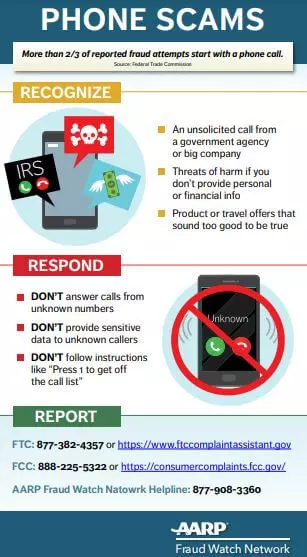We may have entered the digital age, but the telephone remains a key weapon in a scammers’ arsenals. The Federal Trade Commission (FTC) received about 1.25 million fraud complaints in 2020 in which a contact method was identified, and in nearly 1 in 3 cases a call was the swindler’s way in. Once they get you on the line, phone scammers use false promises, aggressive sales pitches and phony threats to pry loose information they can use to steal your money or identity (or both).
It’s easy to understand why crooks love to dial you up. The FTC reports that the median loss from a successful phone scam in 2020 was $1,170, nearly four times the median loss across all fraud types. And technology has made this illicit work easy. With auto dialers, shady operators can blast out robocalls by the millions for just a few dollars a day. Readily available spoofing tools can trick your caller ID into displaying a genuine government or corporate number, or one that appears to be local, to increase the chances that you’ll answer.
Whether live or automated, scam callers often pose as representatives of government agencies or familiar tech, travel, retail or financial companies, supposedly calling with important information. It might be good news. (You’re eligible for a big cash prize! You’ve been preselected for this great vacation deal!) It might be bad. (You owe back taxes. There’s a problem with your credit card account.) Whatever the issue, it can be resolved if you’ll just, say, provide your Social Security number or make an immediate payment…
To continue reading, click here…
